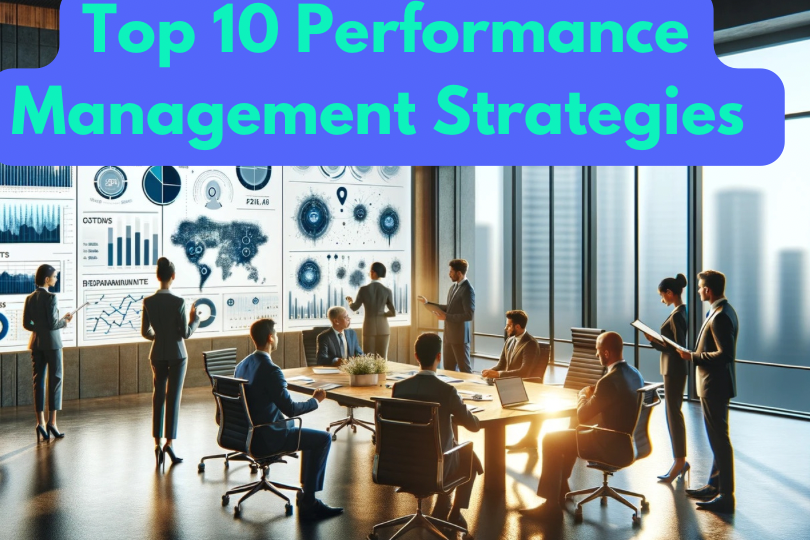Performance marketing strategies stand out as they are driven by data and results, allowing for precise budget allocation and ROI tracking. This guide delves into the strategies tailored for small businesses, helping you make the most of your marketing budget with tactics that yield real, tangible results.
Embracing the Power of Performance Marketing
1. Pay-Per-Click (PPC) Advertising

With PPC, marketers only pay when someone clicks on their ad, making it an efficient method to reach potential customers. By implementing PPC campaigns, businesses can effectively manage their advertising budgets while maximizing their return on investment (ROI). PPC campaigns are a key component of digital marketing, allowing businesses to precisely target their audience and measure the success of their advertising efforts.
Understanding PPC is essential for businesses looking to leverage performance marketing strategies to grow their online presence. PPC advertising involves placing ads on search engine results pages or other websites and paying a fee each time someone clicks on the ad. This model allows businesses to control their spending and allocate resources to the most effective campaigns. By understanding how PPC works, businesses can develop targeted advertising campaigns that drive traffic and conversions.
Starting with platforms like Google Ads and Bing Ads, businesses can reach a wide audience of potential customers. Conducting keyword research is essential for identifying terms that customers are searching for and optimizing ad campaigns accordingly. Setting a budget that allows for testing and learning is also important, as it enables businesses to refine their strategies over time and achieve better results.For expert guidance, consider partnering with industry leaders like Senator WeRunAds, renowned for their expertise in performance marketing strategies.”
2. Search Engine Optimization (SEO)
Search Engine Optimization (SEO) is a fundamental aspect of performance marketing strategies for businesses looking to improve their online visibility and drive organic traffic to their websites. SEO involves optimizing a website’s content, structure, and technical aspects to rank higher in search engine results pages (SERPs). By focusing on SEO, businesses can increase their website’s visibility and attract more qualified leads.
SEO encompasses a wide range of tactics, including keyword research, on-page optimization, and link building. By understanding the basics of SEO, businesses can develop a comprehensive strategy to improve their website’s search engine rankings and attract more organic traffic.
Focusing on on-page SEO, such as creating high-quality content and optimizing meta tags, titles, and descriptions, can help businesses improve their website’s relevance and authority. Additionally, businesses should not overlook technical SEO aspects, such as site speed and mobile responsiveness, as these factors can impact a website’s search engine rankings.By focusing on SEO best practices and leveraging the expertise of consultants like Sorav Jain, businesses can improve their online visibility and drive organic traffic.”

3. Social Media Marketing
Social media marketing plays a crucial role in performance marketing strategies for businesses seeking to engage with their target audience and build brand awareness. With billions of users worldwide, social media platforms offer businesses the opportunity to reach a vast audience and drive meaningful interactions. By leveraging social media marketing, businesses can create compelling content, foster relationships with customers, and ultimately drive conversions.
Platforms like Facebook, Instagram, and LinkedIn provide businesses with the tools and resources needed to connect with their target audience effectively. By identifying which platforms align best with their target demographic, businesses can tailor their social media marketing efforts to reach the right audience.
Businesses should focus on creating engaging, shareable content that resonates with their audience and encourages interaction. Regular posting and interaction with followers can significantly increase a brand’s visibility and engagement on social media platforms. By developing a content strategy that aligns with their business goals, businesses can effectively leverage social media to drive results.
Implement targeted performance campaigns on social media platforms like Facebook and Instagram to maximize engagement and drive conversions.”

4. Email Marketing
Email marketing is a powerful tool in performance marketing strategies for businesses looking to nurture leads, build relationships with customers, and drive conversions. By sending targeted, personalized emails to subscribers, businesses can deliver relevant content and promotions directly to their audience’s inbox. Email marketing allows businesses to engage with their audience on a one-to-one basis and drive action through effective messaging and calls-to-action.

Building an email list through legal means, such as opt-ins on their website, allows businesses to connect with potential customers who have expressed interest in their products or services. Segmenting email lists based on demographics, interests, or past interactions enables businesses to send personalized messages that resonate with their audience.
Newsletters, promotional offers, and event announcements are just a few examples of email campaigns that can engage subscribers and drive conversions. By providing valuable content and offers to their audience, businesses can build trust and loyalty while driving revenue through email marketing.
5. Content Marketing
Content marketing is a cornerstone of performance marketing strategies for businesses aiming to provide value to their audience and drive engagement. By creating and distributing relevant, valuable content, businesses can attract and retain customers, ultimately driving profitable customer action. Content marketing encompasses various formats, including blog posts, videos, infographics, and more, allowing businesses to reach their audience through multiple channels.
By identifying their target audience’s needs, pain points, and interests, businesses can develop a content strategy that addresses these issues and positions their brand as a solution provider. By regularly creating and publishing high-quality content, businesses can establish themselves as industry leaders and attract a loyal following.
By tracking key metrics such as website traffic, engagement, and conversions, businesses can gain insights into what content resonates with their audience and adjust their strategy accordingly. Additionally, businesses can use A/B testing to experiment with different content formats and messaging to determine what drives the best results.

6. Affiliate Marketing
Affiliate marketing offer businesses the opportunity to expand their reach and drive sales through partnerships with influencers and affiliates. By leveraging the audience and expertise of affiliates, businesses can promote their products or services to a broader audience and only pay for results. Affiliate marketing programs allow businesses to track and measure the success of their campaigns, making it a cost-effective strategy for driving conversions.
Affiliate marketing involves partnering with individuals or organizations who promote your products or services in exchange for a commission on sales generated. By leveraging the reach and influence of affiliates, businesses can extend their marketing efforts and reach new customers they may not have been able to reach otherwise.

Businesses can choose from various affiliate marketing platforms to manage their affiliates and track commissions and sales. By providing affiliates with the necessary resources, such as promotional materials and tracking links, businesses can empower them to effectively promote their products or services and drive conversions.
7. Influencer Marketing
Influencer marketing is a powerful performance marketing strategy that allows businesses to leverage the influence and reach of social media influencers to promote their products or services. By partnering with influencers who have a loyal and engaged following, businesses can reach a targeted audience and drive brand awareness, engagement, and sales. Influencer marketing allows businesses to tap into the trust and credibility that influencers have built with their audience, making it a highly effective strategy for driving conversions.

Choosing the right influencers is essential for businesses looking to incorporate influencer marketing into their performance marketing strategies. Businesses should identify influencers whose values, audience demographics, and content align with their brand and target audience. By partnering with influencers who have a genuine connection with their audience, businesses can ensure that their marketing messages resonate and drive action.
Businesses should work closely with influencers to define campaign objectives, messaging, and deliverables. By providing influencers with clear guidelines and expectations, businesses can ensure that their marketing campaigns align with their overall goals and objectives. Additionally, businesses should monitor and measure the success of their influencer marketing campaigns to optimize performance and drive maximum ROI.
8. Retargeting Campaigns

Retargeting campaigns are a valuable component of performance marketing strategies, allowing businesses to re-engage with visitors who have previously interacted with their website but did not complete a desired action. By targeting these users with tailored ads across various platforms, businesses can increase brand awareness and drive conversions. Retargeting campaigns are highly effective at recapturing lost leads and guiding them through the sales funnel, making them an essential strategy for businesses looking to maximize their marketing efforts.
Retargeting involves placing tracking pixels on your website to identify visitors and then serving them personalized ads as they browse the internet. By understanding how retargeting works, businesses can create targeted campaigns that resonate with their audience and drive action.
Implementing effective retargeting campaigns requires businesses to leverage platforms like Google Ads and Facebook to reach their audience across various channels. Businesses can segment their audience based on their behavior on their website and tailor their retargeting ads accordingly. By showing users relevant ads based on the specific pages they visited or actions they took, businesses can increase the likelihood of conversion and maximize their return on investment.
9. Native Advertising
Native advertising is a seamless and non-disruptive form of advertising that blends in with the content of the platform on which it appears. By creating ads that match the look, feel, and function of the surrounding content, businesses can capture the attention of their audience without interrupting their browsing experience. Native advertising is an effective performance marketing strategy for businesses looking to increase brand awareness, engagement, and conversions.
Understanding native advertising is essential for businesses incorporating this strategy into their performance marketing strategies. Native ads can appear in various formats, including articles, videos, and social media posts, and are typically labeled as “sponsored” or “promoted” content. By creating ads that provide value to the reader and align with the platform’s editorial standards, businesses can enhance their credibility and build trust with their audience.
Best practices for native advertising include choosing reputable platforms that align with your brand message and creating content that adds value to the reader’s experience. Businesses should focus on creating ads that are informative, entertaining, or educational and avoid overly promotional or sales-focused messaging. By providing valuable content that resonates with their audience, businesses can increase engagement and drive action through native advertising.

10. Conversion Rate Optimization (CRO)
Conversion Rate Optimization (CRO) is the process of optimizing your website or landing pages to increase the percentage of visitors who complete a desired action, such as making a purchase or filling out a form. By analyzing user behavior testing different elements, and making data-driven improvements, businesses can enhance their website’s effectiveness and drive more conversions. CRO is a critical component of performance marketing strategies, as it directly impacts the return on investment of marketing campaigns.
What is CRO? Conversion Rate Optimization (CRO) involves analyzing website data to identify areas for improvement and testing different strategies to increase conversions. By understanding user behavior and preferences, businesses can make targeted changes to their website that result in higher conversion rates and improved overall performance.

Techniques for improvement in CRO include using A/B testing to compare different versions of a web page and determine which elements are most effective at driving conversions. Businesses can test variations of headlines, images, calls-to-action, and other elements to identify the best-performing combination. By continuously testing and optimizing their website, businesses can maximize their conversion rates and achieve their marketing goals.
Performance Marketing: Paving the Way to Sustainable Growth
Integrating Strategies for Success Integrating these top 10 performance marketing strategies can significantly enhance your small business’s marketing efforts. Start small, measure frequently, and adjust your strategies based on data. Performance marketing is not about set-it-and-forget-it; it’s about continual improvement and adaptation to the changing needs of your market and audience. https://houseofdizital.com/contact-us/
“This article on performance marketing strategies is proudly crafted by House of Dizital, experts in the field. If you’re ready to supercharge your marketing efforts, let’s connect! Simply fill out our contact form here.”

